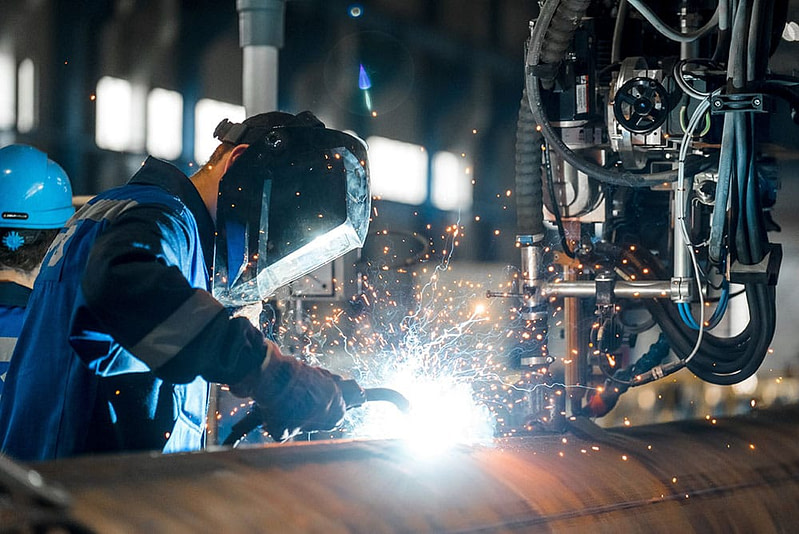Preventing Accidents: Key Safety Measures for Manufacturing Facilities
Manufacturing facilities are essential to the global economy, producing everything from consumer goods to industrial machinery. However, they also come with significant risks, including machinery malfunctions, chemical exposure, and human error. Workplace accidents can lead to injuries, downtime, and legal liabilities, making safety a top priority for every facility. Implementing proper safety measures can prevent accidents, protect employees, and improve overall efficiency.
1. Conduct Regular Safety Training
A well-trained workforce is the first line of defense against accidents. Employees should receive regular safety training, covering topics such as equipment operation, emergency procedures, and hazard identification. New hires should undergo a comprehensive safety orientation, while existing employees should participate in periodic refresher courses. Training should be interactive, with real-life scenarios and hands-on demonstrations to reinforce key concepts.
Key Training Areas:
- Proper use of personal protective equipment (PPE)
- Fire prevention and response protocols
- Safe handling of hazardous materials
- Emergency evacuation procedures
- Ergonomic practices to prevent strain injuries
2. Implement and Enforce PPE Usage
Personal Protective Equipment (PPE) is essential in manufacturing environments where employees are exposed to physical, chemical, or electrical hazards. Employers must ensure that workers have access to the appropriate gear and that its use is strictly enforced.
Common PPE in Manufacturing:
- Hard hats for head protection
- Safety goggles or face shields to prevent eye injuries
- Hearing protection in noisy environments
- Gloves for chemical or mechanical safety
- Steel-toed boots to protect against falling objects
Supervisors should regularly check that PPE is being worn correctly and replace any damaged or expired equipment.
3. Maintain Equipment and Machinery
Malfunctioning machinery is a leading cause of workplace accidents. Regular maintenance and inspections ensure that equipment operates safely and efficiently. Maintenance schedules should be strictly followed, and employees should be encouraged to report any signs of wear and tear.
Preventive Maintenance Measures:
- Lubricating moving parts to reduce wear
- Inspecting electrical wiring and connections
- Replacing worn-out safety guards and shields
- Checking for leaks in hydraulic or pneumatic systems
Lockout/tagout (LOTO) procedures should be enforced to prevent accidental machine start-ups during maintenance or repairs.
4. Establish Clear Signage and Floor Markings
Proper signage and floor markings help workers navigate the facility safely and avoid hazardous areas. Clear labels should be used to indicate:
- Emergency exits and evacuation routes
- Dangerous areas, such as high-voltage zones or restricted access sections
- Safe walkways and forklift paths
- Storage locations for hazardous materials
Using color-coded floor markings can further enhance workplace safety by distinguishing different zones, such as red for danger areas and yellow for caution zones.
5. Improve Workplace Ergonomics
Repetitive motions, awkward postures, and heavy lifting can cause musculoskeletal injuries over time. Implementing ergonomic solutions reduces strain on employees and enhances productivity.
Ergonomic Improvements:
- Adjustable workstations for different heights
- Anti-fatigue mats for employees who stand for long periods
- Mechanical lifting aids to reduce manual handling
- Rotating tasks to prevent repetitive strain injuries
- Custom machine guards designed to promote safe and ergonomic equipment use
Supervisors should encourage workers to take short breaks to stretch and adjust their posture throughout their shifts.
6. Enforce a Zero-Tolerance Policy for Unsafe Behavior
Unsafe practices, such as bypassing safety procedures or ignoring warning signs, can put the entire workforce at risk. Companies should have a zero-tolerance policy for violations, ensuring that safety rules are consistently followed.
Steps to Reinforce Safety Compliance:
- Implement a reporting system for unsafe behavior
- Recognize and reward employees who follow safety protocols
- Conduct surprise safety audits to ensure compliance
- Take corrective action against repeat safety offenders
7. Emergency Preparedness and Response
Despite preventive measures, emergencies can still happen. A solid emergency response plan ensures that employees know how to react in critical situations.
Emergency Preparedness Steps:
- Conduct regular fire and evacuation drills
- Install clearly marked emergency shut-off switches
- Provide easily accessible first-aid stations and emergency eyewash stations
- Train designated employees in first aid and CPR
Having a well-coordinated response plan minimizes injuries and property damage in case of an accident.
8. Encourage Open Communication and Reporting
Employees should feel comfortable reporting safety concerns without fear of retaliation. An open-door policy allows workers to voice hazards they encounter, helping to address issues before they escalate.
Ways to Improve Safety Communication:
- Hold regular safety meetings where employees can discuss concerns
- Provide anonymous reporting channels for hazards
- Actively investigate and resolve reported safety issues
- Involve employees in safety committees to foster a culture of responsibility
In Conclusion
Safety in manufacturing facilities is a shared responsibility between management and employees. By investing in proper training, enforcing PPE use, maintaining equipment, and fostering a strong safety culture, accidents can be significantly reduced. Prioritizing workplace safety not only protects workers but also enhances productivity and overall business success.
By implementing these key safety measures, manufacturing facilities can create a safer, more efficient work environment for everyone.








